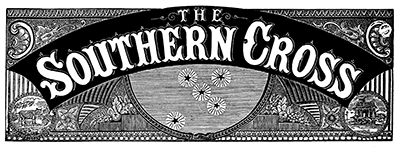The Māori nation maintains that they never surrendered sovereignty in what is often referred to as the English version of the Treaty of Waitangi, primarily because no English version of the Treaty of Waitangi exists. The founding documents of the Treaty are built on nine documents, each signed by different chiefs and Rangitira as they journeyed across the country. Of these nine, only one – The Treaty of Manukau Kawhia, – was penned in English and which was signed at the Waikato Heads on March 20, 1840. This is a distinctly different document from Te Tiriti o Waitangi (Treaty of Waitangi)
The chiefs who placed their signatures to a Te reo Māori text at Waitangi did so with the understanding that they were granting Queen Victoria the right to establish a government. The document presented for their signatures on March 20, 1840 – the Treaty of Manukau / Kawhia – is a separate agreement from the Treaty signed at Waitangi over 300 kilometers away.
The Treaty of Manukau/ Kawhia and the Treaty of Waitangi are unique documents, each written in a different language and each conveying a different message. One permits the formation of a government, while the other calls for the absolute surrender of a nation’s sovereignty forever.
Article 1 of the Treaty of Waitangi grants Queen Victoria the right to form a government. In stark contrast, the Treaty of Manukau/Kawhia implores the chiefs to yield sovereignty to Her Majesty the Queen. These are different agreements, a fact underscored by the 43-day interval between the initial agreement at Waitangi and the signing at Awhitu peninsula on the Manukau Heads.
Lieutenant William Hobson would have presented the proposal to establish a government to the Chiefs in such a way that the chiefs would retain their authority over the land, and that the British were merely establishing a government to exercise authority over their own citizens in the country. Lt Hobson wasn’t present at Awhitu peninsula on the Manukau Heads on the 20th March 1840 he delegated Captain William Cornwallis Symonds of the British Army to get the signatures.
The suggestion that 535 chiefs would willingly relinquish all their authority and the sovereignty of their civilisation is implausible. This is not the message Lieutenant Hobson conveyed when he was gathering signatures for the Treaty. The idea that these powerful political leaders would passively surrender control of their lands and economic base is a disservice to their intelligence and the founders of this nation.
In line with the principle of Contra proferentem, any ambiguity should be interpreted against the party that drafted or proposed the provision. Given the Crown’s unclear interpretation of its own document, the chiefs and tribes of the 21st century reserve the right to determine how the documents should be interpreted not a Royal commission.
Organisations like Te Papa, in an act of revisionist history, have grouped the Treaty documents together under the banner of “The Treaty of Waitangi”. This gives the impression that the entire agreement was ratified at a single location in one instance. In truth, there are 9 separate founding documents, each signed in different locations in different languages over a span of 6 months. This misrepresentation seems to be a deliberate attempt to create the perception that the English version is equivalent to the Te reo Māori version.
The Māori nation is united in the belief that sovereignty was never surrendered. This assertion is backed by the facts, including over 300km distance and a 43-day delay between the signing of the Treaty at Waitangi and the signing of the English text the Treaty of Manukau/Kawhia.

